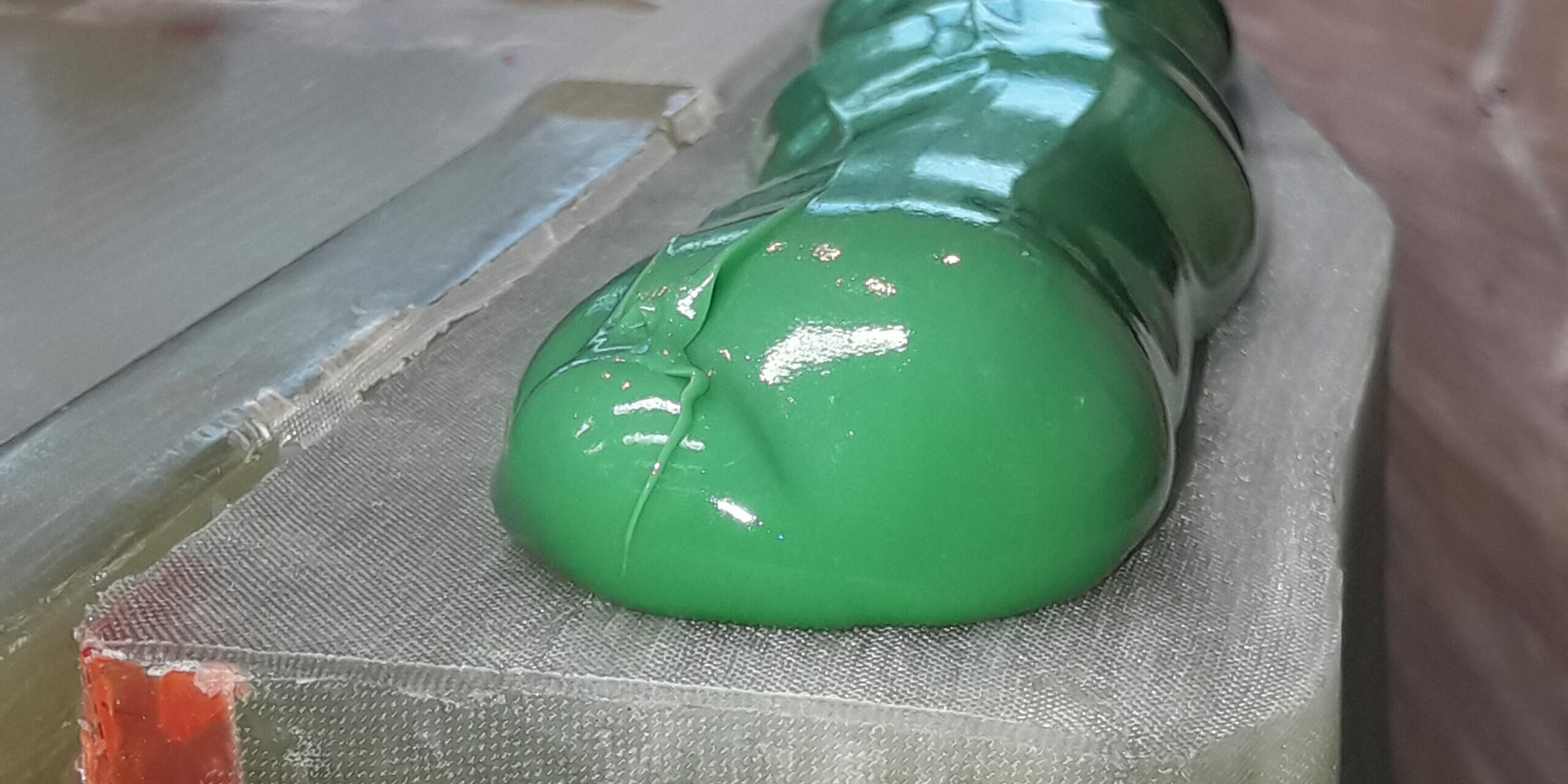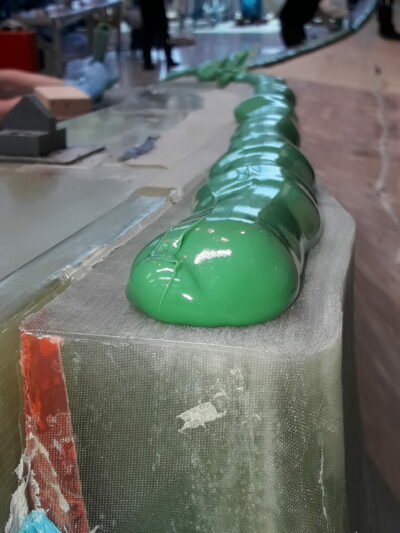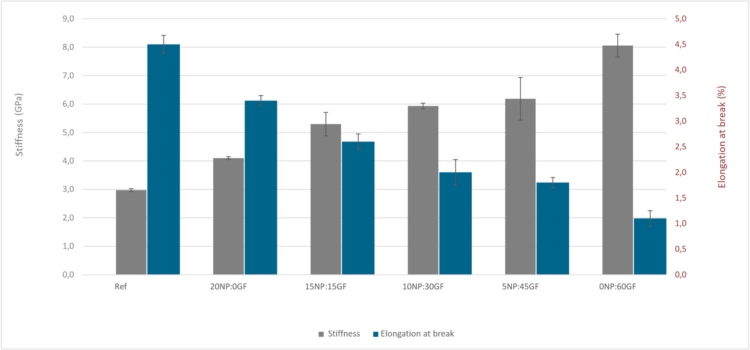The expansion of electricity generation using wind energy significantly contributes towards the climate-neutral energy supply in Germany. Due to the limited area available, future wind turbines will need to be more economical, with an improved degree of utilisation. The development of larger rotor blades is particularly important for this. However, established materials are nearing their performance limits as blade sizes increase. Rotor blades consist of large composite half-shells that are bonded together. This design requires long and thick adhesive bond lines, which largely determine the overall strength of the blade. Therefore, the development of high-performance adhesives is essential for a new generation of very large systems. In the framework of the BMWK-project HANNAH, DLR is working with partners from research and industry (Leibniz Universität Hannover; Fraunhofer; INVENT; TECOSIM; Zeisberg Carbon)to develop and test innovative hybrid adhesives. For this purpose, conventional fillers are combined with nanoparticles to improve cohesion and fatigue resistance of the modified adhesive systems. Moreover, specific environmental influences such as moisture and temperature need to be considered.
Why nanoparticles?
As an addition to conventional fillers such as short fibres, the integration of nanoscale particles allows further improvement of material properties. Nanoscale particles have very large specific surface areas, so important processing properties such as high viscosity can be effectively adjusted even with low filler contents. Adhesives used in the wind energy industry have to be thixotropic to ensure the application of thick layers and prevent the adhesive from flowing. Furthermore, void-free application and sufficient processing time must be ensured. In addition to the process properties, the mechanical performance of the adhesives is crucial when they are used to manufacture rotor blades, which are subject to large stresses. Experimental investigations have shown that adhesives reinforced with short fibres have higher stiffness (factor 2.7) and fracture resistance (factor 3). At the same time, however, elongation at break decreases due to the short fibres. Nanoparticles can help to counteract this effect. Thus, combining both fillers enables a customised hybrid adhesive design.
Application-oriented testing
During service life, wind turbines are exposed to a great many environmental stresses. Even during the manufacture of rotor blades, environmental factors such as increased temperatures and humidity can occur in the production and storage environments. These environmental stresses can cause degradation of the mechanical properties of the rotor blades and ultimately lead to premature component failure. For this reason, the adhesives developed at DLR are stored under hot-wet conditions and tested at high temperatures. Tests have demonstrated that the permeation of water is slowed down by the fillers. At the same time, however, an increase in short fibre content leads to increased moisture absorption. It is therefore reasonable to reduce the short fibre content in order to keep water absorption as low as possible.










